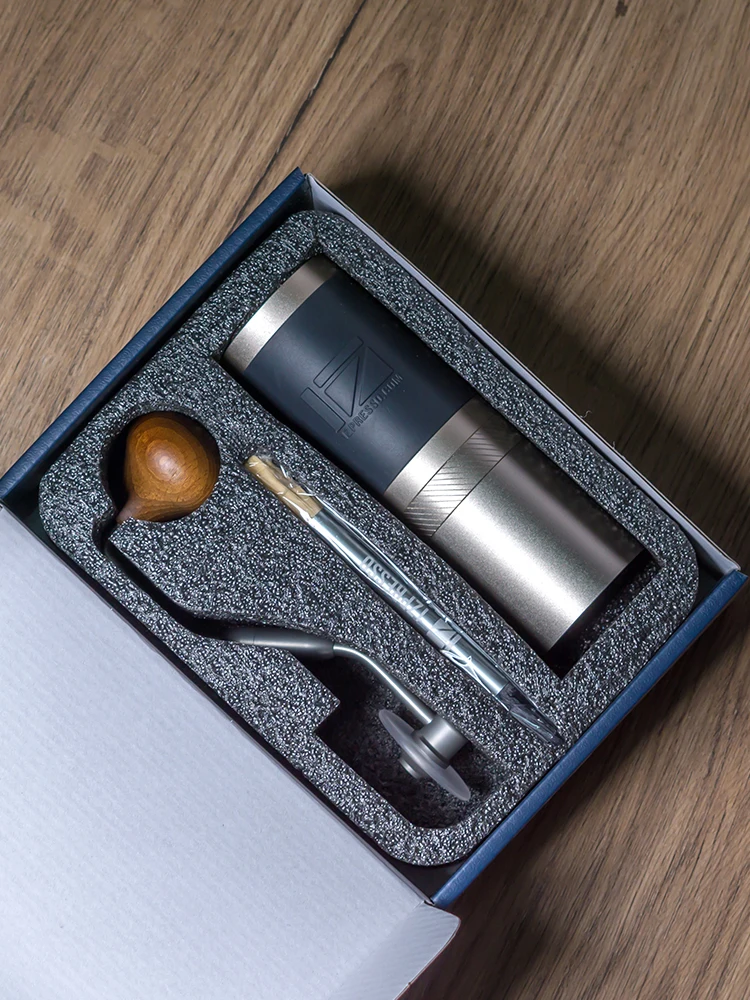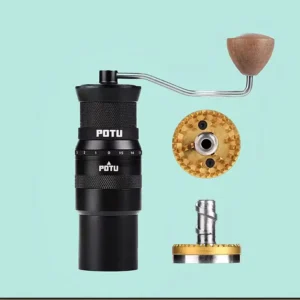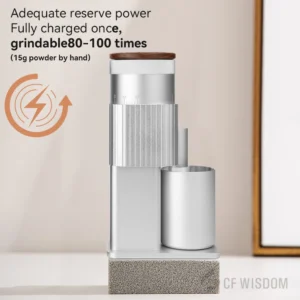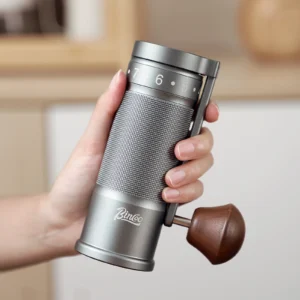Understanding Burr Grinders: The Foundation of Espresso Quality
When it comes to brewing exceptional espresso, the journey begins long before water meets coffee. At its heart lies a critical component that many overlook: the coffee grinder. Unlike blade grinders that chop beans inconsistently, burr grinders crush coffee beans between two abrasive surfaces with precision and control, producing uniform particles essential for balanced extraction.
Two distinct burr shapes dominate the coffee world: flat and conical. Flat burrs consist of two parallel, horizontal ring-shaped discs with grinding teeth that face each other. As beans enter the center, they’re crushed outward between these surfaces. Conical burrs, in contrast, feature a cone-shaped center burr nestled inside a ring-shaped outer burr, creating a vertical grinding path as beans are pulled downward through increasingly narrow spaces.
The shape of these burrs isn’t merely a design choice—it fundamentally affects how coffee particles are created, directly impacting extraction dynamics, flavor profiles, and ultimately, the consistency of your espresso. Understanding these differences is the first step in unlocking superior coffee and achieving the perfect shot.
While both designs effectively grind coffee, the way they interact with beans creates distinct particle distributions that lead to noticeably different results in your cup. These differences become particularly important when brewing espresso, where pressure, time, and particle size must harmonize perfectly. The ongoing debate between flat vs conical burr manual grinders illustrates how passionate coffee enthusiasts are about these seemingly small but impactful design variations.
Particle Size Distribution: The Science Behind Consistency
At the heart of espresso quality lies a concept that drives extraction dynamics: particle size distribution. This term describes how ground coffee particles vary in size within a single batch—a factor that dramatically influences how water flows through coffee during extraction.
Flat burrs typically produce what experts call a unimodal distribution—a relatively narrow range of similarly sized particles clustered around one average size. This creates a more uniform bed of coffee grounds, allowing water to flow through at a consistent rate. Conical burrs, meanwhile, tend to create a bimodal distribution, meaning the particles group around two different size ranges: a set of larger particles and a notable amount of smaller particles called “fines.”
These distribution patterns aren’t just technical details—they directly impact flavor. When hot water passes through coffee under pressure, it extracts compounds at different rates depending on particle size. Smaller particles extract more quickly, sometimes contributing to bitterness if overextracted, while larger particles (sometimes called “boulders”) may remain underextracted, adding sour notes.
The science of extraction reveals why this matters: water interacts differently with various particle sizes, dissolving compounds at different rates. Research shows that uniform extraction—where all particles contribute equally to flavor—is nearly impossible with widely varied particle sizes. The degree of grind particle uniformity in flat burr systems often leads to more predictable extraction percentages and flow rates.
These differences in particle distribution explain why espresso shots can taste remarkably different despite using identical coffee beans. Understanding this science helps baristas manipulate extraction to achieve specific flavor goals—whether seeking clarity and brightness or depth and richness.
Flat Burrs: Precision and Clarity in Your Cup
Flat burrs operate on a principle of precision and consistency. These parallel discs grind coffee in a horizontal plane, keeping beans between the burrs for a relatively consistent amount of time. As they rotate, the cutting surfaces create a shearing action that produces remarkably uniform coffee particles.
Key Characteristics of Flat Burrs:
- Particle Distribution: Creates predominantly unimodal distribution with fewer fines and more consistency in particle size
- Heat Generation: Higher RPM operation typically generates more heat due to friction between the parallel surfaces
- Flavor Profile: Produces cups with greater clarity, pronounced acidity, distinct flavor separation, and often brighter notes
- Retention Issues: Tend to retain more grounds between the burrs, which can affect dose consistency
- Size and Weight: Generally larger and heavier than comparable conical burrs
The uniform particle size from flat burrs translates directly to extraction behavior. With fewer fines, there’s less risk of over-extraction, which means reduced bitterness and astringency. This consistency allows water to flow through the coffee bed more evenly, extracting compounds in a more predictable fashion.
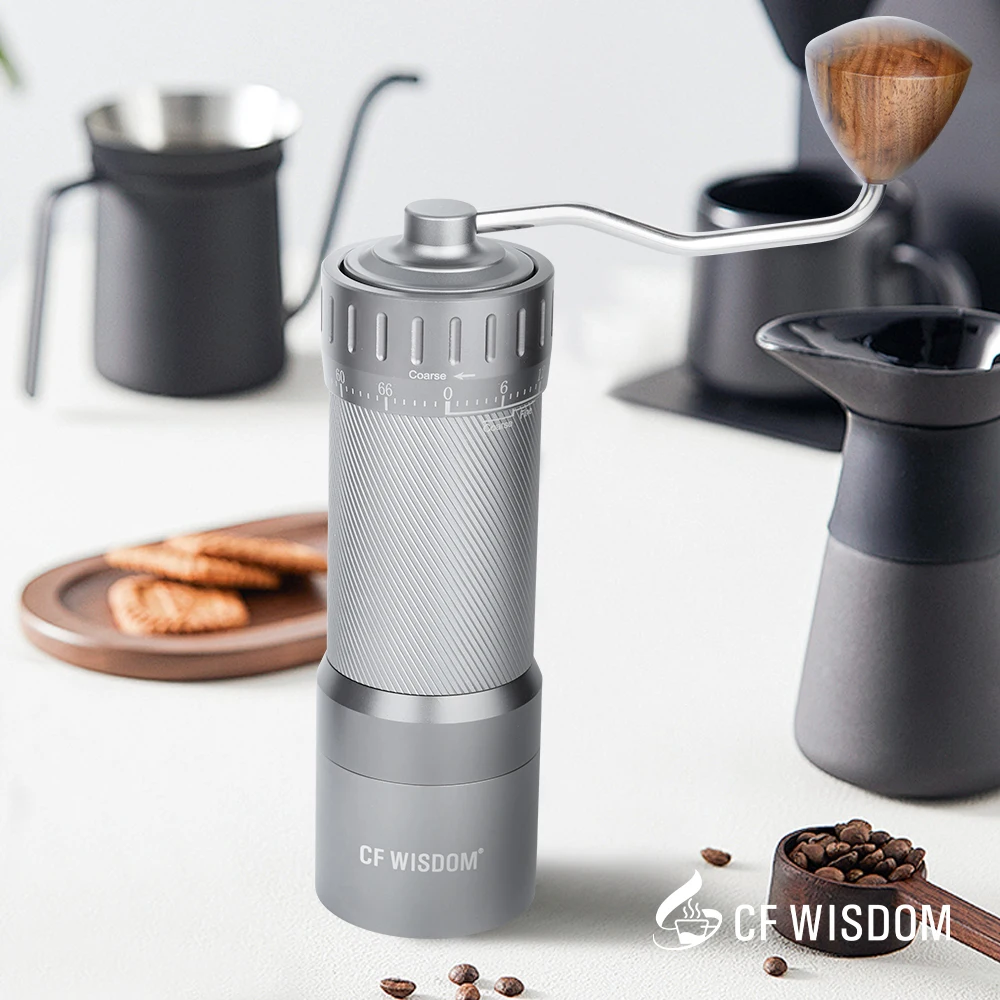
Espresso shots prepared with flat burr grinders for exceptional coffee often showcase cleaner flavor distinction—you might taste specific notes of raspberry, chocolate, or citrus individually rather than blended together. This clarity makes flat burrs particularly well-suited for single-origin espressos and lighter roasts where preserving distinct flavor characteristics is desirable.
For those seeking precision in their espresso preparation, flat burr hand grinders provide exceptional control over grind size with the added benefit of minimal heat generation compared to electric models. While they require more effort to operate, many espresso enthusiasts appreciate the direct connection to the grinding process and the resulting flavor clarity.
Conical Burrs: Body and Richness in Every Shot
Conical burrs take a fundamentally different approach to coffee grinding. Their nested design creates a vertical grinding path where beans are crushed between a cone-shaped inner burr and a ring-shaped outer burr. This geometry creates a distinctive cutting action as coffee moves downward through progressively tighter spaces.
Key Characteristics of Conical Burrs:
- Particle Distribution: Produces a bimodal distribution with a notable amount of fines alongside consistently sized larger particles
- Heat Generation: Generally operates at lower RPMs, resulting in less heat transfer to coffee
- Flavor Profile: Creates shots with fuller body, richer mouthfeel, blended flavors, and often enhanced sweetness
- Retention Benefits: Typically experiences less grind retention due to gravity-assisted movement
- Size Efficiency: Usually more compact and lightweight than comparable flat burr designs
The characteristic bimodal distribution from conical burrs plays a crucial role in traditional espresso brewing. While uniform particle size has its benefits, the controlled presence of fines actually contributes positively to espresso in specific ways. These smaller particles help form resistance during extraction, promoting proper crema development and contributing to the thick, syrupy body prized in traditional Italian espresso.
Espresso shots from conical burrs often display a remarkable integration of flavors. Rather than separating individual taste notes, these shots tend to present a harmonious blend where flavors complement each other. Many describe the resulting cup as having more depth, richness, and a rounder mouthfeel that coats the palate pleasantly.
This grinding approach has made conical burrs the dominant design in quality manual coffee burr grinders. Their lower rotation speeds and vertical orientation work exceptionally well with hand-powered mechanics, allowing coffee enthusiasts to achieve excellent grind consistency without excessive effort.
The conical design particularly excels with medium to dark roasts where body and sweetness are prioritized over bright acidity, making them a favorite for traditional espresso styles and milk-based drinks where the rich chocolate and caramel notes can shine through.
Head-to-Head: Direct Comparison for Espresso Enthusiasts
To help you make an informed decision about which burr type might best suit your espresso preferences, let’s compare flat and conical burrs across critical factors affecting consistency and flavor:
| Factor | Flat Burrs | Conical Burrs |
|---|---|---|
| Particle Distribution | Unimodal (more uniform) | Bimodal (varied sizes with more fines) |
| Flavor Clarity | Higher – distinct, separated flavors | Lower – blended, integrated flavors |
| Body/Mouthfeel | Generally lighter, cleaner | Typically fuller, richer |
| Heat Generation | Higher (potential flavor impact) | Lower (better flavor preservation) |
| Grind Retention | Generally higher | Typically lower |
| Noise Levels | Often louder | Usually quieter |
| Typical RPM | Higher | Lower |
| Ideal Coffee Types | Light to medium roasts, single origins | Medium to dark roasts, espresso blends |
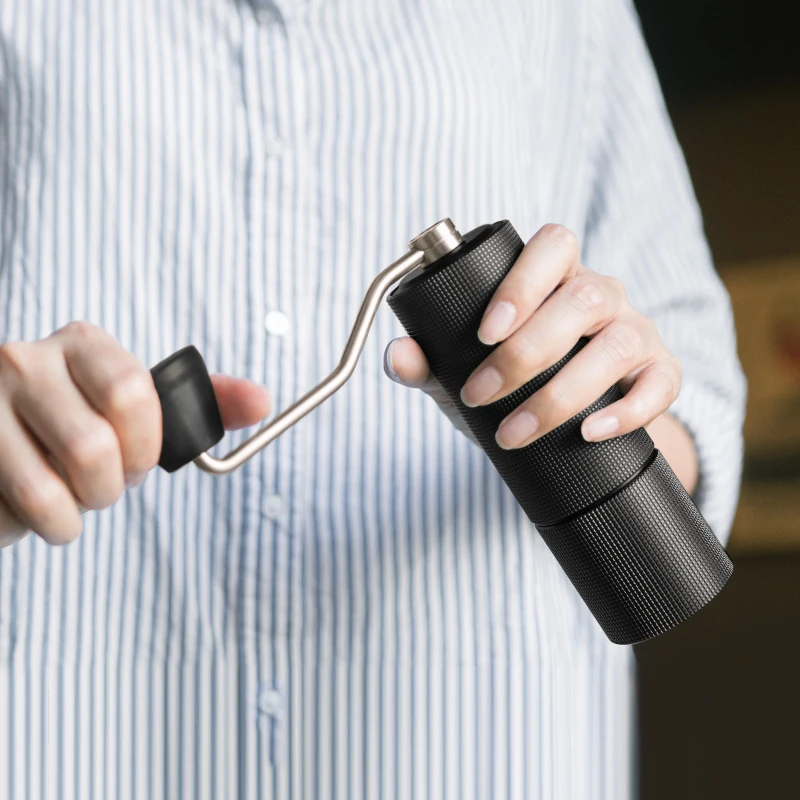
These differences manifest clearly in the cup. Flat burrs typically produce espresso with bright acidity, distinct flavor notes, and crisp clarity—characteristics prized in modern specialty coffee. Conical burrs, meanwhile, create shots with enhanced body, prominent sweetness, rounded mouthfeel, and often better crema persistence.
Understanding these differences allows home baristas to align their equipment with their taste preferences and brewing goals. Those focused on definitive espresso grind consistency might prioritize different factors depending on their preferred roast level and flavor profile.
Neither option is inherently superior—each excels at highlighting different characteristics of coffee. Your preference will likely depend on whether you value flavor clarity or rich body, bright acidity or deep sweetness, modern or traditional espresso styles.
Beyond Shape: Other Critical Factors Affecting Grind Consistency
While burr shape significantly impacts espresso consistency, several other factors can be equally influential—and sometimes even more important—in determining grind quality:
Burr Geometry
The specific cutting pattern, teeth design, and cutting angle greatly affect how coffee is ground. Some burrs feature aggressive teeth for faster grinding, while others use more refined patterns optimized for uniformity. These design decisions can sometimes outweigh the basic flat versus conical distinction.
Burr Size
Diameter matters significantly. Larger burrs provide more cutting surface area, allowing coffee to be ground at lower speeds while maintaining output. This reduced speed generates less heat and often improves consistency. A large conical burr might outperform a small flat burr despite shape differences.
Burr Material
Material choice affects durability, heat conductivity, and grinding performance. Steel burrs are standard in quality grinders, offering excellent cutting ability and longevity. Ceramic burrs retain less heat but may be more brittle. Special coatings can further enhance performance regardless of shape.
Burr Alignment
Perhaps the most critical factor is alignment. Even premium burrs perform poorly when misaligned. The critical impact of burr alignment on coffee quality cannot be overstated—perfect alignment ensures each particle experiences the same grinding action, producing consistency that even burr shape cannot guarantee alone.
Grinder Build Quality
Motor power, bearing quality, stability, and frame rigidity all contribute to consistent grinding performance. Precision manual grinders with excellent build quality often outperform poorly constructed electric grinders despite differences in burr shape or size.
These factors explain why two grinders with identical burr shapes can produce dramatically different results. A perfectly aligned, well-engineered conical burr grinder might produce more consistent grounds than a poorly aligned flat burr grinder with inferior build quality. Understanding these nuances helps explain why grinder recommendations often go beyond the simple flat-versus-conical debate.
Making Your Choice: Which Burr Shape Suits Your Espresso Style?
Selecting the ideal burr shape depends largely on your personal preferences and brewing goals. Consider these questions to guide your decision:
What flavor characteristics do you value most?
If you prize clarity, brightness, and distinct flavor separation, flat burrs typically excel in highlighting these qualities. If you prefer richness, body, and a rounded mouthfeel, conical burrs might better satisfy your taste preferences.
What roast levels do you typically use?
Lighter roasts often benefit from flat burrs’ clarity and precision, allowing their complex acidity and delicate flavors to shine. Darker roasts frequently pair well with conical burrs, which enhance body and sweetness while smoothing out potential roughness.
Do you primarily brew espresso or multiple methods?
Dedicated espresso enthusiasts might appreciate the specific advantages of either burr type for their preferred style. If you regularly brew various methods, consider which characteristics matter most across all your brewing techniques.
What’s your typical volume and workflow?
Consider practical factors like grind retention, heat generation, and noise if you prepare multiple consecutive shots or grind larger quantities. Conical burrs often offer workflow advantages in home settings due to lower retention and heat.
Remember that there’s no definitively “better” option—only different strengths. Many passionate espresso enthusiasts eventually acquire both types as they discover the unique advantages each brings to different coffees. Espresso coffee hand grinders with quality burrs can provide an excellent entry point for experiencing these differences without major investment.
The best approach is often experimentation: try both types if possible, perhaps at a local coffee shop or through borrowing equipment, to discover your personal preference before investing.
Fine Adjustment Hand Grinder, Precision Manual Grinder, Travel Coffee Grinder
Price range: $185.11 through $494.63 Select options This product has multiple variants. The options may be chosen on the product pageHand Burr Grinder, Hand Crank Coffee Grinder, Manual Espresso Grinder, Portable Coffee Grinder
Price range: $262.72 through $300.22 Select options This product has multiple variants. The options may be chosen on the product pageManual Burr Mill, Manual Coffee Grinder Stainless Steel, Manual Coffee Mill Grinder, Mechanical Coffee Grinder
Price range: $127.26 through $130.32 Select options This product has multiple variants. The options may be chosen on the product pageHand Burr Grinder, Manual Coffee Grinder Stainless Steel, Precision Manual Grinder
Price range: $183.64 through $187.52 Select options This product has multiple variants. The options may be chosen on the product page
Optimizing Burr Performance: Maintenance for Consistency
Regardless of which burr shape you choose, proper maintenance remains essential for optimal performance and consistency. Follow these guidelines to keep your grinder performing at its best:
Regular Cleaning
Remove coffee oils and particles that accumulate on burrs, which can affect taste and grinding performance. For most home users, a monthly deep clean using grinder cleaning pellets or uncooked rice (for some models) helps maintain consistency.
Alignment Checking
Watch for signs of misalignment, including unusual noise, inconsistent grind size, or excessive fines. If you notice sudden changes in extraction time or taste despite unchanged settings, alignment issues might be the culprit.
Burr Replacement
Even premium burrs eventually wear down. Signs it’s time for replacement include difficulty achieving fine grinds, increasingly inconsistent particle size, or noticeably longer grinding times for the same quantity of beans.
Calibration Maintenance
Regularly check that your grinder’s adjustment mechanism moves smoothly and locks securely. Manual espresso grinders particularly benefit from occasional recalibration to ensure settings remain accurate.
Proper maintenance ensures you’ll experience the full benefits of your chosen burr shape. Even premium burrs can’t perform optimally when dulled by coffee residue or thrown out of alignment by regular use. With consistent care, your grinder will deliver reliable results that showcase the distinctive qualities of your chosen burr design.
Specialty Applications: When Burr Shape Makes the Biggest Difference
While both burr shapes produce excellent coffee, certain specialty applications magnify their distinctive characteristics:
Competition Scenarios
In competitive barista events, equipment choices become strategic. Many competitors select grinders based on their specific coffee and desired presentation. Flat burrs often appear in competitions where judges evaluate flavor clarity and distinction, though this varies with competition style and coffee selection.
Espresso Profiling
Advanced espresso techniques like flow profiling and pressure profiling interact differently with grounds from various burr types. Conical burrs’ bimodal distribution creates different flow resistance patterns compared to flat burrs’ more uniform bed, allowing experienced baristas to leverage these differences for specific extraction goals.
Extreme Light Roasts
Very light, Nordic-style roasts highlight the differences between burr shapes dramatically. Flat burrs often excel with these challenging beans, as their uniform particle size helps achieve balanced extraction despite the beans’ density and potential for underdevelopment.

Traditional Italian-Style Espresso
For classic Italian espresso with robust crema and full body, conical burrs have historically been preferred. Many traditional Italian espresso machines were designed with the extraction characteristics of conical-ground coffee in mind, particularly when using medium-dark roasts.
Understanding the mechanical principles behind flat burr grinders helps explain why these differences become more pronounced in specialty applications where extraction variables are meticulously controlled.
FAQs: Common Questions About Burr Shape and Espresso
Are flat burrs always better for espresso clarity?
While flat burrs generally produce clearer flavor separation, factors like burr quality, alignment, and grinder design can sometimes make well-designed conical burrs produce comparable clarity. The difference is most noticeable with higher-end grinders where other variables are optimized.
Do conical burrs produce more crema?
Conical burrs typically create more abundant, persistent crema due to their higher fines production. These fine particles contribute to increased resistance during extraction, often resulting in the thick, golden crema prized in traditional espresso.
Does burr size matter more than burr shape?
In many cases, yes. A large, well-designed burr of either shape will typically outperform a smaller burr of either shape, as size affects grinding speed, heat generation, and potential particle consistency. Professional-grade grinders prioritize large burrs regardless of shape.
How do I know if my grinder’s burrs are good quality?
Quality burrs have precise, sharp cutting surfaces, maintain consistent performance over time, and produce minimal “channeling” during extraction. The best indication is consistent taste results—poor-quality burrs produce increasingly inconsistent results as they wear.
Can I use a flat burr grinder for traditional Italian espresso?
Absolutely. While conical burrs traditionally pair with Italian-style espresso, many excellent Italian cafes now use flat burr grinders. Fine adjustment hand grinders of either burr type can produce outstanding traditional espresso with proper technique and settings.
Manual Grinders: How Burr Shape Influences Hand-Ground Espresso
Manual grinders present unique considerations regarding burr shape due to their hand-powered operation. Most quality hand grinders feature conical burrs—a design choice driven by practical mechanics rather than flavor preference alone.
Conical burrs excel in manual grinders because their grinding action naturally suits hand-powered rotation. The vertical orientation allows gravity to assist bean feeding while requiring less torque to operate effectively. This makes achieving espresso-fine grounds less physically demanding compared to flat burrs of similar size.
Despite conical dominance, several premium manual coffee grinders for espresso now feature flat burrs, offering home baristas the distinctive clarity they provide without requiring electricity. These specialized grinders typically incorporate advanced gearing systems to reduce the effort needed for grinding.
For espresso specifically, manual grinding presents unique challenges regardless of burr shape. The fine grind required demands more rotations and greater effort, making grinder stability and comfortable operation particularly important. High-quality bearings, solid construction, and ergonomic design become essential for consistent results.
When selecting a manual grinder for espresso, consider not just burr shape but also stability, grind adjustment precision, and comfort—especially if preparing multiple consecutive shots. The best manual grinders combine quality burrs with excellent engineering to deliver consistency comparable to electric counterparts, albeit with more physical effort.
The Future of Burr Design: Innovations Improving Consistency
The traditional flat-versus-conical debate is evolving as innovative approaches emerge to enhance grinding precision and consistency:
Hybrid Designs
Some manufacturers are developing hybrid burr systems that aim to combine the clarity of flat burrs with the texture and body of conical designs. These experimental geometries suggest the future may transcend the binary choice between traditional shapes.
Advanced Materials
Modern metallurgy has enabled the creation of burrs with unprecedented hardness and edge retention. Special coatings and treatments improve durability while reducing sticking and retention, addressing traditional weaknesses of both burr types.
Computer-Optimized Patterns
Using computational fluid dynamics and particle analysis, cutting-edge burr designs now feature scientifically optimized teeth patterns that produce more consistent particle size distribution than traditional designs. These advances in flat burr uniform extraction technology are narrowing the performance gap between burr types.
Alignment Innovations
New mounting systems and manufacturing techniques have improved burr alignment stability, reducing one of the most common causes of inconsistency. Self-aligning mechanisms and precision-machined interfaces help maintain optimal performance over time.
These innovations suggest that the future of burr design may increasingly focus on addressing specific extraction goals rather than adhering to traditional shape categories. As technology advances, coffee enthusiasts benefit from increasingly precise tools that allow unprecedented control over the variables affecting espresso consistency and flavor.

